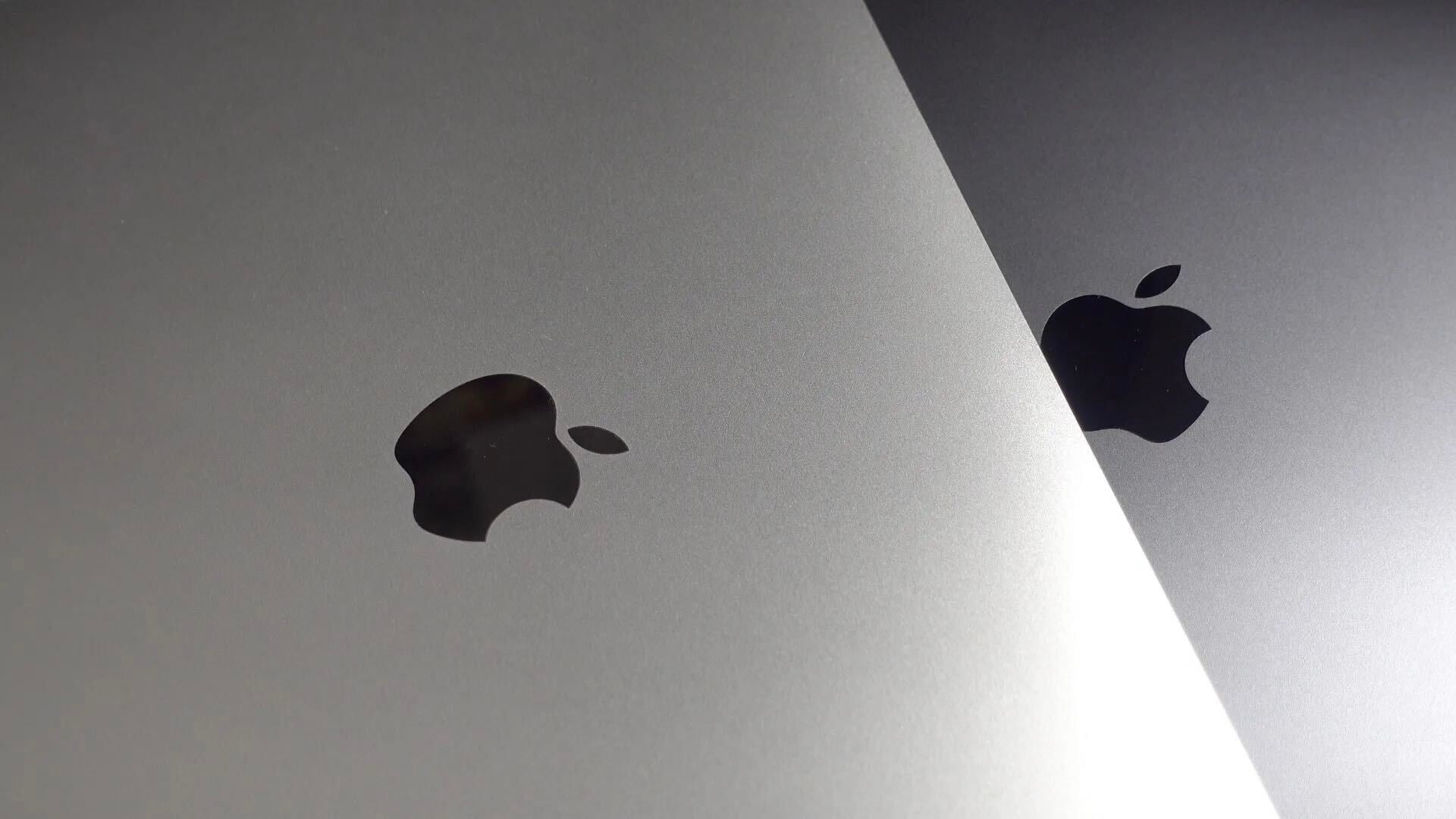A new chapter could be unfolding in Apple’s device recovery landscape. The iOS 13.4 beta is not only introducing a CarKey API built around system codes, but evidence surfaced by developers suggests Apple may be testing an Internet Recovery-like feature for iOS. The latest developer beta points to a potential OS Recovery option that would allow restoring iPhone, iPad, and other Apple devices without a direct computer connection. While still under development and not accessible in the current system, this feature could redefine how Apple devices are repaired or recovered, particularly for hardware without external connectors. The possibility that Internet Recovery-like functionality could work over-the-air or via a USB link to another iPhone or iPad has drawn considerable interest, given its resemblance to macOS Internet Recovery, which has long provided a way to reinstall the OS over the internet without another computer nearby.
OS Recovery in iOS 13.4: What the Beta Signals
The third beta release of iOS 13.4 contains references that suggest Apple is exploring a feature called “OS Recovery.” In broad terms, OS Recovery would enable a complete restoration of iOS, iPadOS, and related Apple operating systems directly from Apple’s servers, rather than requiring a connection to a separate Mac or PC. This is especially notable because it would address a significant pain point for devices that are more self-contained or lack simple external connectors. Historically, restoring Apple devices could be straightforward for some models but became problematic as devices leaned more on cloud-based identity, authentication, and streamlined hardware designs that minimize physical connectors.
Within the beta’s internal code and build configurations, developers have identified pathways that imply an online, device-specific recovery process. The implication is that users could initiate an OS reinstall over the air, leveraging Apple’s servers to fetch a clean operating system image, verify its integrity, and reinstall it on the device. Equally important is the potential to perform the same recovery operation by establishing a USB-based link to another iPhone or iPad. In effect, the OS Recovery feature could offer dual pathways: one that uses the internet directly and another that funnels the restoration process through a nearby iOS device acting as a conduit or facilitator much like a backup migration or support role. In both cases, the recovery would be done without requiring users to connect the broken device to an external computer.
The evidence points to a system that is designed to verify authenticity and integrity at multiple layers, mirroring the security-first approach Apple takes with iOS. If implemented, the OS Recovery feature would likely include safeguards such as device authentication tied to an Apple ID, cryptographic validation of the OS image, and checks to prevent unauthorized reinstalls. While these features would bolster reliability and user confidence, they would also raise questions about how recovery is initiated, what data might be temporarily involved in the process, and how protection against potential misuse is maintained. At this stage, however, the feature remains under active development and may be altered or even removed before any public rollout, underscoring the possibility that Apple is still weighing its strategic value and user impact.
OS Recovery: A New Way to Restore Apple Devices
OS Recovery would mark a significant shift in how Apple devices are restored following critical failures, braking away from the traditional model that relies on a physical computer or a dedicated utility. The concept, as suggested by the beta evidence, is to offer a direct restore method that does not depend on a desktop computer being present. If the feature becomes reality, users could see two core benefits: convenience and accessibility for devices that are harder to service in a traditional setting, and a cleaner, faster route to reestablish a known-good software baseline after issues such as boot loops, failed updates, or severe software corruption.
From a user experience perspective, an OS Recovery flow would need to be simple and secure. Users would require a trusted method to verify they are initiating a legitimate recovery and not inadvertently triggering a reset or firmware issue. In practice, Apple would likely implement a guided recovery sequence that clearly communicates what is being restored, what data may be affected, and how long the process is expected to take. The UI would need to gracefully handle network variability when performing OTA restores, and it would have to accommodate devices with varying levels of hardware capability and storage. On the security front, the OS recovery process would almost certainly rely on secure boot chains, verified OS images, and possibly two-factor authentication tied to the user’s Apple ID, ensuring that only authorized activations can proceed.
Another key consideration is the scope of OS Recovery. Would the feature apply to all supported Apple devices—iPhone, iPad, Apple TV, Apple Watch, HomePod—or would it be limited to specific families with compatible hardware and software baselines? The current signals suggest a broad objective, but the rollout reality could involve staged support aligned with device age, processor families, or specific iOS and iPadOS versions. In any scenario, the recovery path would need to address not only the reinstall of the operating system but also the restoration of essential system services, app integrity, and user data protection measures such as encryption and key management. The design would need to balance deep restoration capability with robust safeguards to avoid inadvertent data loss or device bricking.
How It Could Work: OTA Pathway and USB Proximity Pathway
The OS Recovery concept implies two principal pathways for initiating and completing a restoration. First, an over-the-air (OTA) pathway would allow a device to contact Apple’s servers via the internet and retrieve a verified OS image to reinstall. This route would likely rely on the device’s existing credentials, possibly tied to the owner’s Apple ID and trusted device relationships. In practice, users might trigger an OS Recovery from a software interface, a hardware button sequence, or a system-level recovery menu that directs the device to fetch the correct OS version, confirm its authenticity, and perform a clean installation. OTA recovery would be particularly beneficial when devices have no direct physical connection, enabling a remote fix that minimizes downtime and service visits.
Second, a USB-based pathway would involve connecting the device to another iPhone or iPad to facilitate the recovery process. This approach would resemble a proxied restoration, where the working device acts as a bridge to secure the download and installation. The other iOS device would need to participate in a trusted handshake with the device undergoing recovery, ensuring privacy and data safety. The USB channel would provide a stable data conduit, potentially reducing the risk of interrupted downloads due to weak network conditions. The migration-tool-like functionality referenced in early discussions may inform how the proximity restoration process could leverage existing iOS-to-iOS data transfer protocols, with appropriate adaptations to handle a full OS reinstall rather than merely migrating user data.
In terms of technical steps, a hypothetical OTA OS Recovery would involve several stages: authentication with Apple’s servers, secure negotiation to determine the correct OS build for the device, download of the signed recovery image, integrity verification (likely through cryptographic signatures and checksums), and a staged installation that ensures the device returns to a known-good boot state. The entire sequence would need to handle power state transitions gracefully, preventing partial installations in the event of network instability or battery constraints. The USB-based approach would follow a similar sequence but would anchor the initial handshake and data transfer through a connected iPhone or iPad, potentially delivering the OS image through the established device-to-device communication channels. Both routes would require rigorous error handling, rollback capabilities, and clear user feedback to prevent confusion during a critical recovery process.
From a developer’s perspective, the OS Recovery framework would likely expose APIs and system-level hooks that enable secure remote management of devices in emergency recovery scenarios. It would also demand robust telemetry and diagnostic reporting to ensure Apple can monitor success rates, identify bottlenecks, and refine the recovery experience in ongoing software updates. The presence of CarKey API signals that Apple is expanding system-code-based features in iOS 13.4, and OS Recovery would complement this initiative by adding a resilient backbone for device reinstalls that aligns with Apple’s ecosystem-wide emphasis on security, privacy, and reliability.
Compatibility, Limitations, and Hardware Considerations
One of the most intriguing aspects of an OS Recovery feature is its potential applicability to a wide range of devices, including those that are not easily serviced with traditional methods. Apple Watch, HomePod, and other devices lacking conventional external connectors present a compelling use case for a future recovery mechanism that can function without direct hardware links. The possibility of OS Recovery accommodating such devices could reduce downtime for users disabled by software issues and help authorized service providers restore devices in scenarios where a physical port is not available or feasible to use.
However, several practical questions accompany this vision. First, how will compatibility be determined for devices with different generation hardware, storage capacities, and boot architectures? Will older devices receive OS Recovery support alongside newer models, or will Apple constrain recovery to devices meeting certain minimum hardware criteria? Second, what are the prerequisites for initiating OS Recovery? Would activation rely on a stable cloud connection, a trusted device’s presence, or a combination of both? Third, what is the expected impact on battery usage, data usage, and network requirements during an OTA restore, especially in regions with limited connectivity?
Another important consideration is the likelihood of continued reliance on physical connectors for some recovery scenarios. While Internet Recovery-like functionality is appealing, Apple may still encourage service providers to use official channels, diagnostic hardware, and authorized software utilities in cases where hardware diagnostics, warranty status checks, or security verifications are required. The dual-path concept—OTA and USB-mediated recovery—could offer flexibility without compromising safety and privacy, particularly if users have the option to choose the recovery path that best suits their circumstances.
Security is also central to any compatibility discussion. A recovery flow must defend against abuse, such as attempts to push a malicious OS image or to force a device into an unstable or nonfunctional state. The design would almost certainly incorporate strict user confirmations, cryptographic validation of OS images, and tamper-evident processes that protect against unauthorized modifications. In addition, Apple might implement device-recovery gating through two-factor authentication or other identity verification mechanisms, especially for devices linked to sensitive Apple IDs or enterprise-managed configurations. These safeguards would be essential to maintain user trust and prevent exploitation.
The Timeline, Development Status, and Market Readiness
As of the latest beta, OS Recovery remains under development and is not publicly accessible. The feature’s future viability, readiness for broad consumer rollout, and exact timing remain uncertain. Given that these signals appeared in a beta version, there is a real possibility that Apple could pivot, alter the scope of the feature, or decide to shelve the concept altogether. The timing question is especially salient: would this feature appear in iOS 13.4, or is it being tested for an eventual release tied to a future iOS iteration such as iOS 14? Until Apple confirms or shares broader details, the OS Recovery project should be treated as a technical exploration rather than a guaranteed product update.
From a business and ecosystem perspective, an Internet Recovery-like capability could align with Apple’s broader goals of reducing downtime, minimising repair friction, and ensuring devices return to a secure baseline quickly. It could also support remote support models and improve after-sales experiences, particularly in regions with limited service infrastructure. Yet, introducing a new recovery mechanism also involves careful consideration of policy, privacy, and data protection implications, especially if the process involves handling device data during reinstalls or if it relies on cloud-based image repositories. The balance between accessibility and safeguarding user information will be pivotal in determining the feature’s final form and availability.
Lessons from macOS Internet Recovery and the Wider Implications
The concept of restoring an operating system over the internet is not new in Apple’s ecosystem. macOS has long offered Internet Recovery, a process that reinstalls the operating system without a nearby Mac. The potential iOS counterpart would mirror this approach, extending resilience to iPhone, iPad, and other devices that have grown increasingly independent of traditional desktop support. The macOS model emphasizes fault tolerance, security, and user empowerment: if a device cannot boot or encounters a critical software fault, a network-based recovery can reestablish system integrity and provide a clean starting point for troubleshooting.
Translating that approach to iOS ecosystems would require careful adaptation. iOS and iPadOS are tightly integrated with Apple’s cloud services, device activation safeguards, and tight control over hardware-specific components. An OS Recovery feature would need to ensure that the recovery process respects enterprise deployment scenarios, family sharing arrangements, and personal data privacy. It would also need to consider the pace of iOS updates and the compatibility requirements for rolling back or upgrading to supported builds, the possibility of forced recovery in certain security contexts, and the handling of encrypted backups and cryptographic keys. Apple’s experience with secure boot chains and hardware-based protections would be an asset in implementing a robust OS Recovery flow, but success would depend on meticulous execution, clear user guidance, and transparent communication around what the process entails.
Developer and User Community Reactions: What People Are Saying
The emergence of OS Recovery signals in beta code has sparked curiosity and discussion within the Apple development and user communities. Developers are evaluating how such a feature would interact with existing iOS repair workflows, diagnostic tools, and enterprise device management frameworks. They are likely to assess potential API surface areas, authorization requirements, and the potential impact on recovery-related telemetry and analytics. Users, on the other hand, are weighing the convenience of an internet-based recovery against concerns about data privacy, potential data loss, and the reliability of network-dependent restorations in varied environments.
One recurring question centers on whether OS Recovery would be initiated automatically in the event of a severe software fault or whether users would retain the control to initiate a manual recovery. Another point of interest is how closely OS Recovery would integrate with Apple’s ecosystem services, including iCloud, Activation Lock, and Find My services. If integration is strong, the recovery process could be tightly coordinated with ownership verification and device security features. If not, there might be a more explicit user consent flow with clearly defined steps and warnings. As with any feature in development, the final product could differ significantly from initial beta disclosures, and users should monitor official communications for confirmed details.
Privacy, Trust, and Safety: Weighing the Trade-offs
Introducing an Internet Recovery-like mechanism to iOS would carry significant implications for privacy and safety. On one hand, the ability to restore devices remotely could reduce downtime and enable more timely support, especially for devices that cannot be easily serviced in person. On the other hand, the recovery process could theoretically create new avenues for data exposure if not designed carefully. To mitigate such risks, Apple would need to implement strict data minimization principles, ensure that only necessary system data is processed during the recovery, and maintain a robust audit trail of recovery actions. User consent and clear disclosures would be essential, particularly for enterprise deployments where IT administrators might configure recovery policies across large fleets of devices.
Security considerations would also include safeguarding against the possibility of malicious actors attempting to use OS Recovery as an attack vector. Features like signed OS images, cryptographic verification, and secure boot are likely to be fundamental components of the recovery pipeline. Apple would need to enforce multi-layer defenses to prevent unauthorized activation, tampering with the OS image, and the potential for partial or bricked devices resulting from incomplete or compromised recoveries. For users, the priority would be to ensure that recovery does not compromise personal data, and that a safe, reversible process exists in case of missteps during the recovery flow.
Public Interest and The Future of iOS Recovery
The broader tech community and everyday users are watching this development with interest, particularly given the practical benefits a robust OS Recovery mechanism could deliver. If OS Recovery becomes a mainstream feature, it could reshape how people plan for device maintenance, support, and upgrades. In areas with limited access to authorized service providers, a reliable internet-based recovery could reduce downtime and simplify the path to a clean OS installation. For Apple, the feature could reinforce user trust by offering reliable, low-friction recovery options while maintaining the high security standards that the platform requires.
Though the current signals are speculative and subject to change, the conversation around OS Recovery reflects a broader trend toward more resilient, cloud-assisted device management. The idea of restoring devices without a computer, and possibly with the help of another nearby iOS device, hints at a future where recovery processes are more integrated, automated, and accessible to a wider array of users. As developers continue to explore the beta’s capabilities and Apple weighs the feedback and technical feasibility, observers will be watching for official statements, roadmaps, and demonstrations that clarify how OS Recovery could fit into the existing ecosystem.
Conclusion
Apple’s iOS 13.4 beta is signaling more than a CarKey API development; it hints at a broader, system-level recovery concept that could redefine how iPhone, iPad, and related devices are restored. The proposed OS Recovery feature would potentially enable over-the-air restoration and USB-tethered recovery via another iOS device, drawing clear parallels to macOS Internet Recovery. While the feature remains under development and may evolve or be deprioritized, the implications for user convenience, device repair workflows, and security are substantial. If realized, OS Recovery could provide a more resilient, flexible recovery pathway that reduces downtime for devices, including those without direct external connectors, while maintaining Apple’s stringent emphasis on security and privacy. The coming months will reveal whether Apple moves forward with this concept, refines its scope, or refrains from releasing it to the public.



